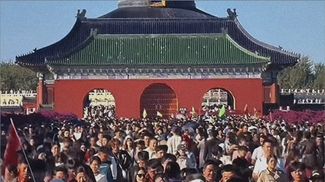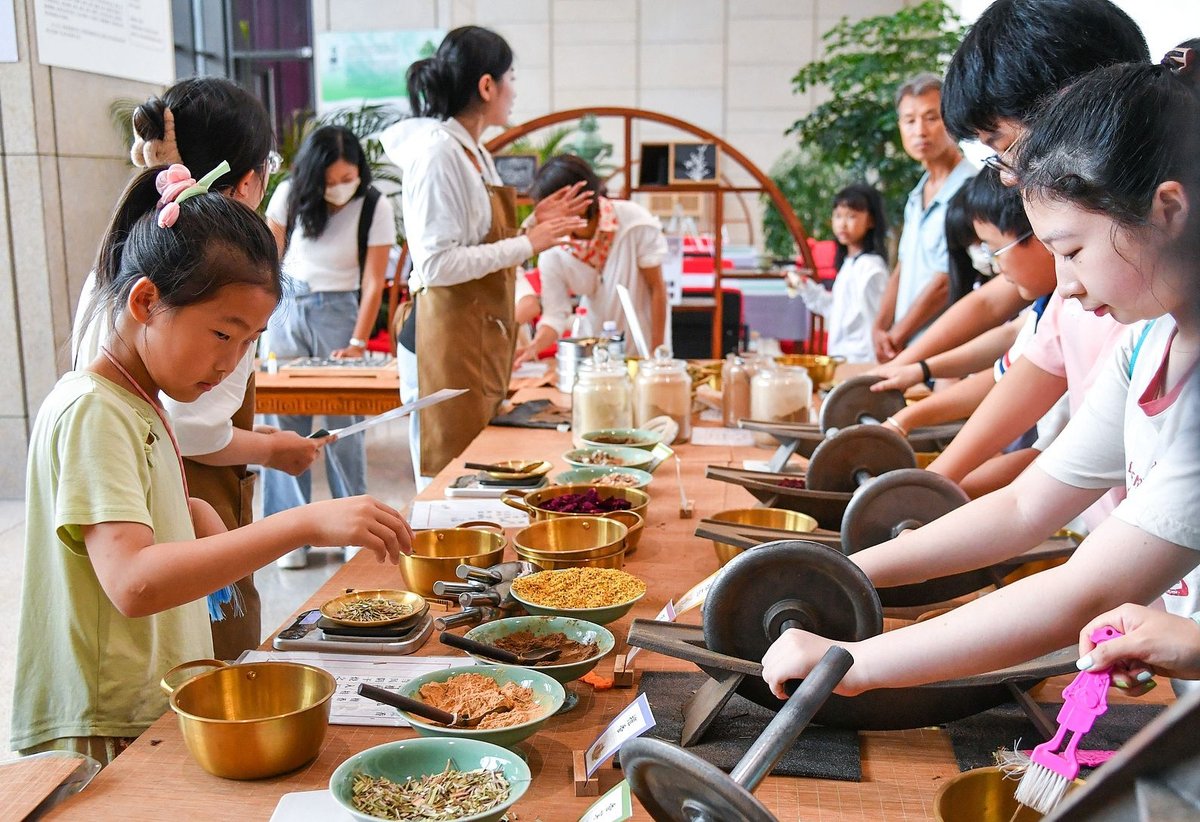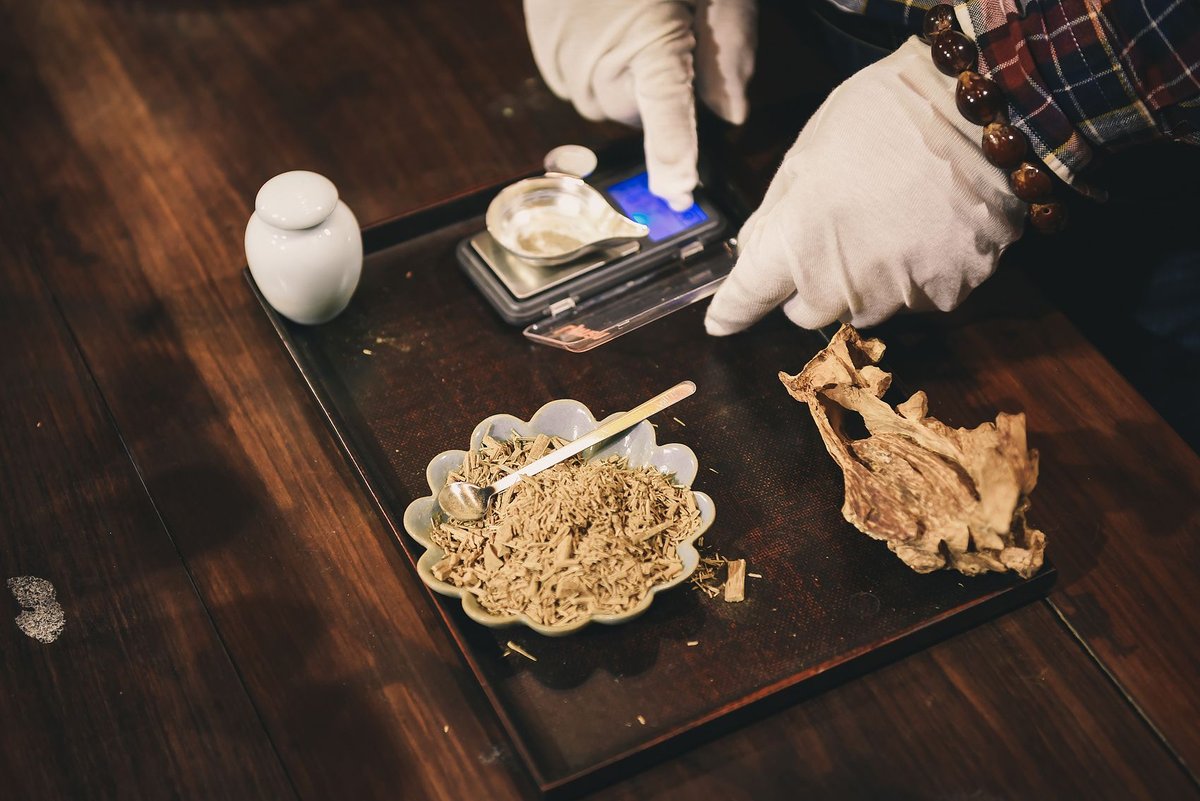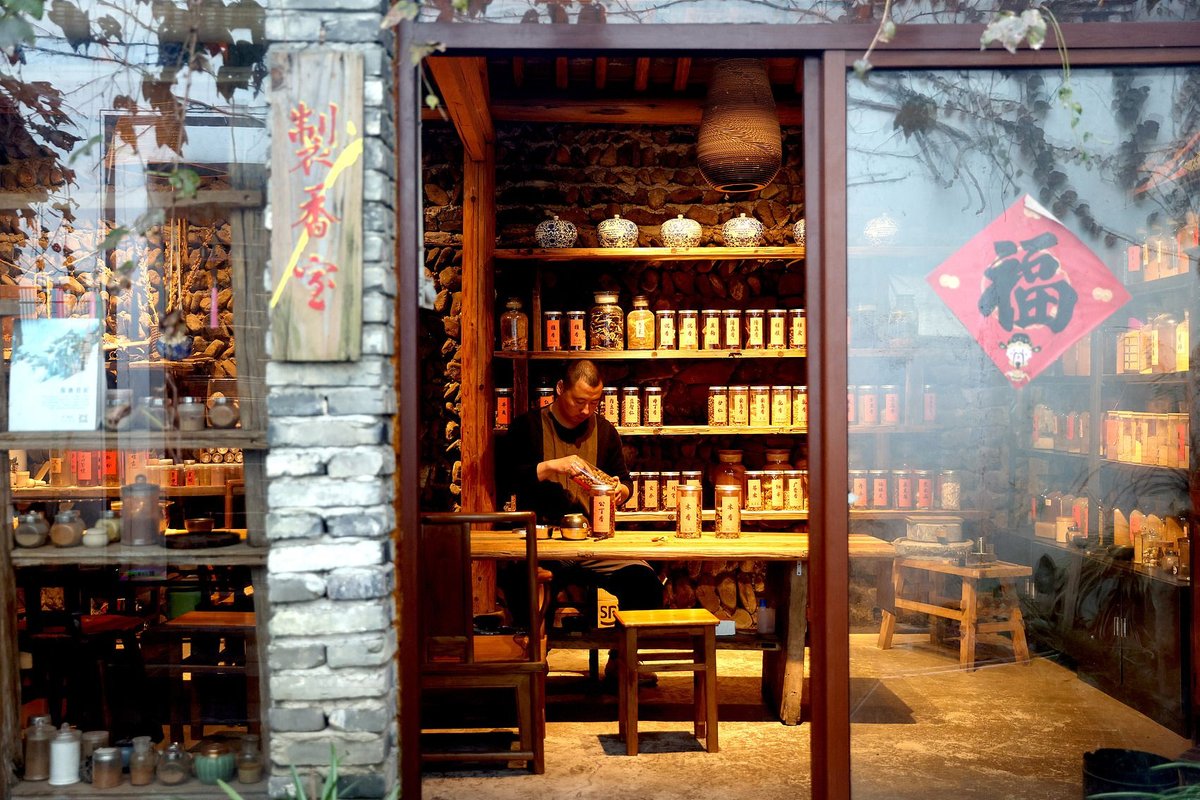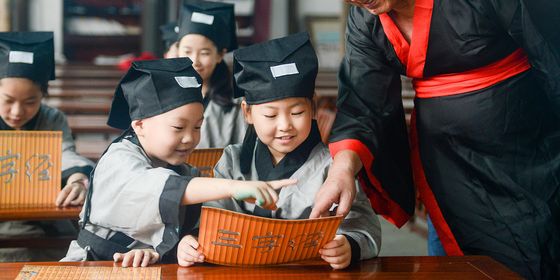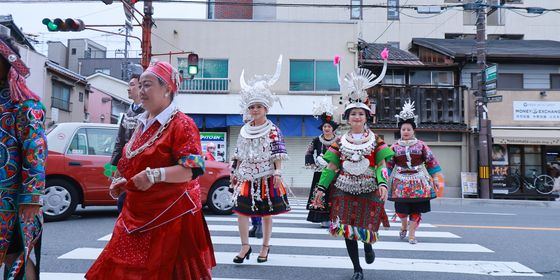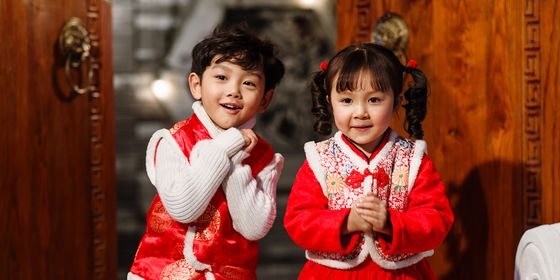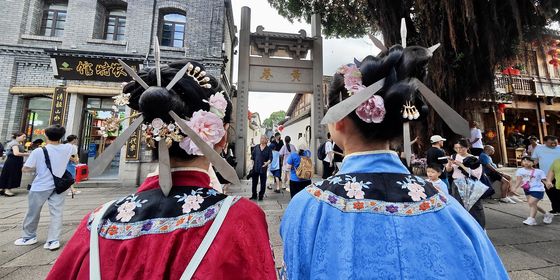From ancient scholars to modern youth, timeless scents like sandalwood and jasmine continue to captivate young Chinese, offering solace in an increasingly busy world
When a sudden snow fell on the southern Chinese city of Hangzhou in early 1090, beloved scholar-official Su Shi (苏轼) smelled an opportunity. Handing his maid a wool brush and a mutton fat jade bowl, named for its rich, cream-white color, he told her to collect fresh snow from the plum blossom tree in the courtyard. As she gently brushed the plums, the flakes fell into the bowl with a fresh, icy fragrance.
Su then melted the snow with a variety of spices, including agarwood and sandalwood. After they had absorbed the water, he molded the resulting mixture into incense sticks and dried them by the fire. The scent was cool yet vibrant, as if delivering a message of spring’s imminent arrival. Su named the scent “Snow’s Spring Message (雪中春信),” as later recorded by Song dynasty (960 – 1279) fragrance enthusiast Chen Jing (陈敬) in his Collection of Fragrances (《陈氏香谱》).
Read more about traditional culture in China:
- From Weapon to Costume Piece: The Formidable Hairpins of Fuzhou
- Soak Up the Decadent Footbath Culture of China’s ‘Foot Capital’
- The Twisted Karma of “Compassionate” Wildlife Release
From revered scholars like Su Shi to common folks, fragrance has been woven through Chinese culture for millennia. Today, the country’s fragrance industry is flourishing, fusing time-honored traditions with contemporary trends. Classic aromas like sandalwood, jasmine, and osmanthus continue to captivate the new generation, offering a peaceful and calming escape in an increasingly complex and competitive society.
Chinese people’s love for fragrance can be traced back more than 3,000 years. In the Western Zhou dynasty (1046 – 771 BCE), people were recorded carrying fragrant herbs in sachets to dispel insects in the Rites of Zhou (《周礼》). The book also documented a rite for ancestor reverence that involved bathing in herb water and burning wormwood, with the smoke believed to be a sacred medium for communication with both ghosts and gods.
And in the Book of Songs (《诗经》), sweet-smelling peonies were described as a gift between lovers, symbolizing their wish to reunite—a play on the alternative name for the flower, jiangli (将离), meaning “to part.”
Later, in the Western Han dynasty (206 BCE – 25 CE), after Emperor Wu sent his envoy Zhang Qian (张骞) to the western regions (present-day southern Xinjiang and central Asia), exotic spices like agarwood and clove flowed into China. Court officials would burn agarwood to perfume their robes and place cloves in their mouths to freshen their breath when conferring with the emperor.
The influx of spices also gave rise to people’s search for more complex aromas. Around this time, spices were increasingly mixed and matched according to recipes, a process called hexiang (合香). In this art of fusion, a “fusion master” would use their knowledge of each spice to synthesize them into pleasing bouquets.
The Song dynasty (960 – 1279) was a particularly creative period for hexiang, with practitioners often organizing gatherings to showcase and evaluate each other’s creations in the form of spiced balls, cakes, and strings of beads. Fragrance also became a daily necessity for common people, as suggested in the famous handscroll painting, “Along the River During the Qingming Festival (《清明上河图》)” by Song dynasty painter Zhang Zeduan (张择端), where a signboard advertising fragrances hangs conspicuously in the bustling streets.
Regardless of how people mixed their spices, agarwood—favored for its mellow, musky, and lingering aroma—often formed the backbone of classic Chinese fragrances. Its scent came from the resin derived from the heartwood of the Aquilaria tree, which flourished in the tropical climates of Hainan Island and Southeast Asia.
Hainan was also home to those clandestinely banished from power. Having fallen foul of a newly installed government, Su Shi was one such exile. While there, he found fascination with Aquilaria tree’ propensity for healing: their sweet resin forms to repair the tree when injured by storms, lightning, and insect bites. Su, too, remained resilient through his hardship, expressing in his poem “Calming the Waves (《定风波》)”: “Wherever my heart is at ease is my home (此心安处是吾乡).”
This feeling of ease can come at little cost as well. Some literati recycled orange skin, sugarcane leftovers, or lychee shells to create scents. First, they were dried and ground into fine powder, then added with pear juice to form fragrant cakes or pills. Although this kind of scent was not as mellow as precious agarwood or sandalwood, its aroma was as refreshing as melon and fruit.
Eager for exotic goods, traders turned their attention abroad in search of new, foreign fragrances. By the seventh century, the Maritime Silk Road had already extended past the Arabian Peninsula, bringing rose water—one of the world’s earliest perfumes—into China, where it became popular during the Song dynasty. Contained in small glass bottles, it imparted a delicate, floral scent when sprinkled on the wearer’s clothing.
While the privileged sometimes added rose water to their rice and wine, commoners could not afford such luxuries. However, after studying distillation techniques of the time, some entrepreneurial perfumists were able to create more affordable versions using local flowers such as jasmine, which were readily available in China.
These developments inspired the Song dynasty fragrance lover Chen Jing to compile his aforementioned book, which extensively recorded incense compendiums from 11 authors throughout history. It included details on spices, perfumery techniques, and recipes—up to 400 of them.
Fast forward to the present day, and with sales in China’s fragrance market forecast to surpass 15 billion yuan this year and grow at an enticing compound annual growth rate of 17 percent over the next five years, a new generation of enthusiasts is crafting their own concoctions.
“My aunt likes to join scent healing parties. They drink Pu’er tea, smell incense, and dance to the flute,” 34-year-old Tian Tian from Yuxi, Yunnan province, tells TWOC. “But my mom prefers to enjoy the scent on her own. After cleaning the house, she would light an incense stick to unwind, losing herself in the gentle swirl of fragrant smoke…She also changes her sticks around the seasons: jasmine for spring, mugwort for summer, osmanthus for autumn, and sandalwood for winter.”
Tian, who runs a home goods store, prefers to enjoy scents via xiangpai (香牌), or scented amulets. “With a knot and some tassels, people can wear them as a lucky charm or hang them to decorate the home.”
When she first made her own xiangpai, mixing a scented powder in water before rolling the resulting “dough” into a mold, she discovered it looked like a chocolate biscuit. This gave her an idea. “Xiangpai molds have very limited patterns, such as auspicious clouds or lotuses. So I thought, why not try with biscuit molds? There are so many cute patterns!“ Tian says with a laugh.
Using animal biscuit molds, she created a zoo’s worth of xiangpai, her favorite being one in the shape of a capybara. The largest living rodent native to South America, the capybara has become an unlikely internet star in China. “Young people admire capybara’s relaxed attitude toward everything. It is like the God of Zen in this stressful society,” she explains. “Whenever I feel anxious, I look at my capabara xiangpai, and it calms me down.”
Eighty kilometers northeast, in Kunming, the provincial capital of Yunnan, lives Xiao Ping, who moved to the city from the bustling tech hub of Shenzhen for its low cost of living and laid-back culture. Part of a growing cohort of young Chinese escaping big cities in search of more sedate lifestyles, she struggled to adapt, despite the change of pace.
“I tried to tangping, but my heart was still restless,” the 37-year-old tells TWOC, using the neologism “lie flat,” which describes the rejection of societal pressures to work. She turned to Zhi He, a scent school in Kunming, for something different.
The school’s curriculum is inspired by everything from classic recipes to poems. The younger brother of Hainan-exiled Su Shi, Su Zhe (苏辙), once described his simple lifestyle in “Visiting Zhongshan Mountain (《游钟山》)”: “When guests arrive, I only burn cypress to welcome, and when I get hungry in the morning, I sit to enjoy porridge in front of the mountain (客到惟烧柏子香,晨饥坐待山前粥).”
Scent makers at Zhi He reimagined the fragrance using cypress seeds, collected each summer from the surrounding mountains of Kunming. The seeds are then boiled in water, chopped, soaked in baijiu, and stored in a jar for seven days. Then the seeds are dried and ground into fine powder, which can be placed in an incensory or pressed into incense sticks.
Fascinated by the ingredient, Xiao has conducted further studies online and learned various novel ways to use them. “I got a pillow filled with cypress seeds, as it can calm the nerves,” she says. “I may try washing my hair in the cypress seed water as well.”
Xiao now looks forward to attending the week-long scent retreats offered by the school. Dressed in fragrance costumes made of natural materials, attendees would choose a nickname inspired by a fragrant plant, then learn about various traditional scents and scent-making techniques, practice ancient recipes, and create a scent of their own. “What I [look forward to] the most was the ‘fragrance feast,’ when I trek to a waterfall, collect plants and flowers, and improvise a scent,” says Xiao. “It’s just like what people did in the Song dynasty.”
Attendees could also learn the practice of xiangdao (香道), or the Zen of fragrance, including fragrance-focused meditation sessions where they are guided on how to quieten their minds and listen to their inner voices as well as the nature around them.
Perhaps xiangdao could be the cure to Xiao’s restless heart. “It will remind me to stop, smell, and live life to the fullest,” she says.


